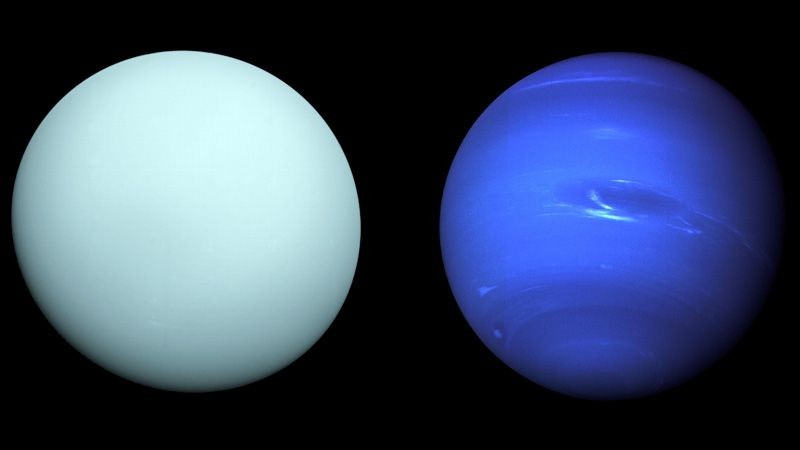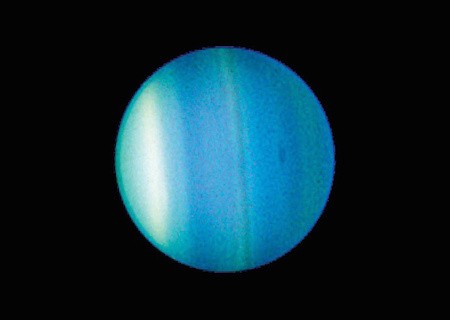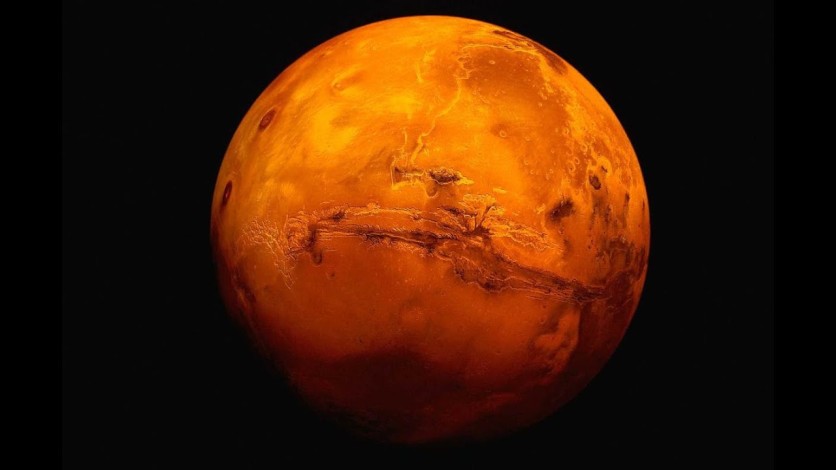A rare event is happening tonight, and it would be a once-in-a-year experience, as the seventh and blue planet from the Solar System's Sun, Uranus, is making a close visit to the planet and brings Mars with it. The planet Uranus makes an annual visit to the planet, but this time, it presents a rare opportunity where it is joined by two other cosmic entities.

According to BGR.com, Uranus would stick by several days in the planet's vicinity and would be seen by humans during the evening this week, but would make its brightest one on Thursday night. However, it would not be as bright or large as the Moon or Mars in its past appearances, as the coldest planet it several light years away from the planet.
Uranus is one sight to see, following the appearance of its neighbor with rings, Saturn, who made an appearance in the recent past, showing its large surface and bright rings that surround it. Now, it is up for the large gaseous planet to show itself, allowing Earthlings to spot the coldest planet alongside the Reddest planet and the natural satellite.
Read Also: 'Destiny 2' Harbinger Activity Guide: How to Start the Mission and Find Hawkmoon Location!
Moon PLUS Uranus and Mars in Conjunction: How to See the Rare Sighting
While Uranus, Mars, and the Moon has come together and shown themselves on last year's Halloween 2020, this year would be a different feat as Uranus would be closer to Earth, compared to last year. Moreover, it is joined by Mars and the Moon, which originally, would not be including the Red Planet.

According to Express UK, the Red Planet and the Coldest Planet would be in conjuction in the coming days, making the public see a rare sighting, and the first cosmic event of 2021. Earth and Uranus' orbit are lining up only this time, because of the massive revolution of the gaseous giant planet that takes almost 84 years to complete one.

Uranus and Mars would be separated by only 1.75 degrees, and is almost an arm's length far from each other, and would give humans a good sight to see between the two planets. The night would start out with the Moon almost covering Mars, which would be easily spotted because of its reddish glow that differs from the stars.
Uranus, Mars, and Moon: Use Binoculars and a Compass
As the Moon move away from Mars, it would become more visible, and the icy planet, Uranus, would be easily seen with Mars. Take out one's compass or smartphone directions and look towards the southwest sky to spot both planets at once.

The moon is also said to glisten and have the shape of a Waxing Gibbous, scheduled to have a full moon by Thursday next week, January 28. Viewing the cosmic entities with one's naked eye would be challenging, unless one knows what these planets look like and discern it from stars.
It is advisable to use either a binocular or a telescope to see it clearly and effectively differentiate it from stars. Go to a place that has limited light pollution and clear skies to fully enjoy Uranus, Mars, and the Moon's appearance.
Related Article : NASA's TESS Discovers a Strange Pink Planet With Two Stars That Triggers BTS Fans, Here's Why
This article is owned by Tech Times
Written by Isaiah Alonzo
![Apple Watch Series 10 [GPS 42mm]](https://d.techtimes.com/en/full/453899/apple-watch-series-10-gps-42mm.jpg?w=184&h=103&f=9fb3c2ea2db928c663d1d2eadbcb3e52)



